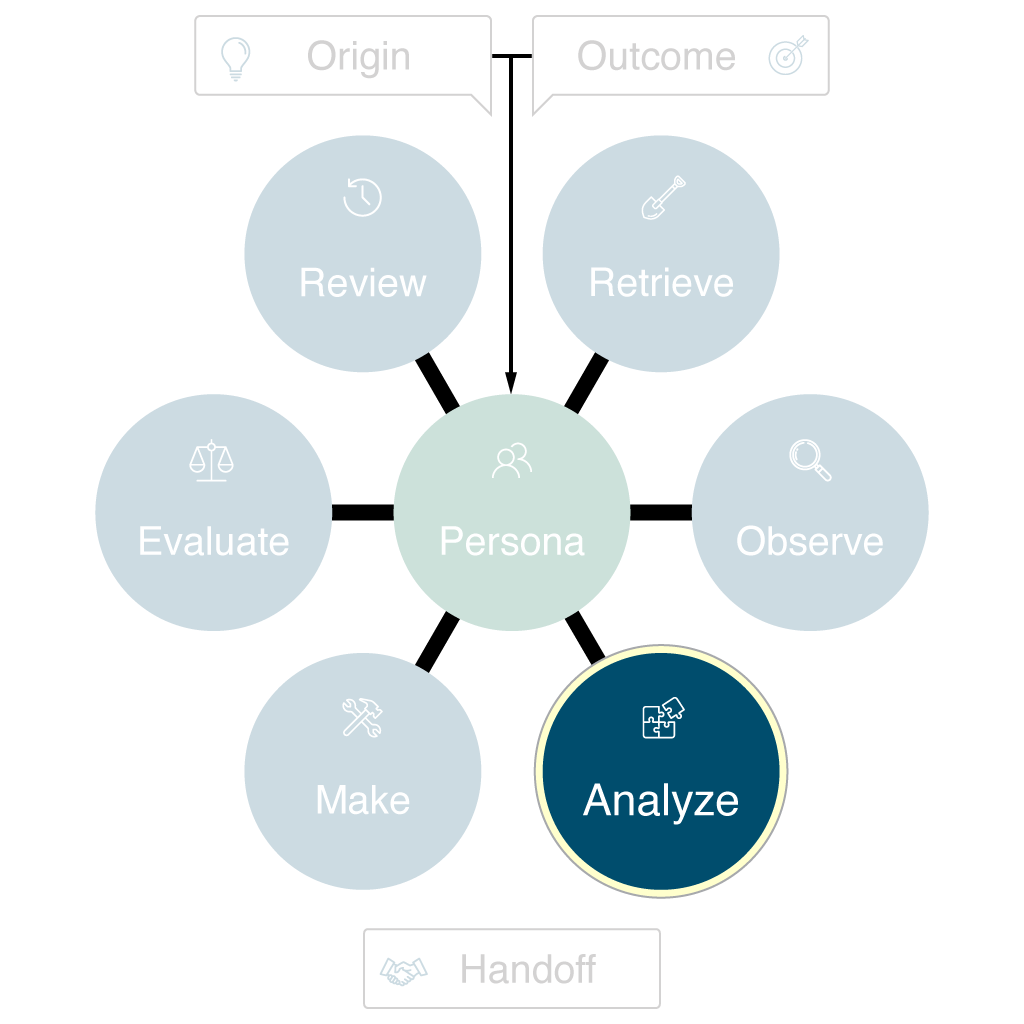
The Analyze phase is where you synthesize all gathered insights and observations to define the real problem and identify opportunities. This is a critical point for cross-functional sensemaking—bringing together diverse perspectives to avoid bias, surface blind spots, and ensure everyone understands what truly matters. By analyzing as a group, you ground your work in facts, not assumptions, and foster alignment for what comes next.
Purpose
- Make sense of collected data and observations collaboratively, with input from all key teams, stakeholders, and external partners
- Identify patterns, root causes, and actionable insights that reflect the needs and realities of everyone involved
- Define the core problem statement that the work will address—one that is visible and agreed upon by all relevant groups
Key Questions
- What patterns or trends emerge from the data and observations, and do all groups see them the same way?
- What is the root cause of the problem we’re addressing? Have all voices had a chance to contribute?
- How do our findings align or conflict with original assumptions? What did we learn from outside our own team?
- What gaps still exist in our knowledge? Who can help fill them?
- What are the risks of misdiagnosing the problem, especially for alignment or delivery down the line?
- What are the most impactful opportunities or priorities identified, and who do they benefit?
- How will we frame a clear, actionable problem statement that everyone can align around?
Read the research report on the importance of analysis and problem definition. [Document Link – PDF]
Case Study Example: Dog Park Finder App (Fetch Spotter)
Applying the Analyze Phase:
What patterns or trends emerge from the data and observations?
- Dog owners struggle most with finding updated information about park amenities and hours
- Safety and cleanliness are top decision factors Users value peer reviews over official city descriptions
What is the root cause of the problem we’re addressing?
- Outdated or inconsistent information is common
- No centralized, trusted source exists for local dog parks
How do our findings align or conflict with original assumptions?
- Original assumption: Most owners just want a map
- Reality: Owners want up-to-date, crowd-sourced feedback, cleanliness and safety info, and verified park features
What gaps still exist in our knowledge?
- Not all neighborhoods are represented in current feedback
- Limited data on park usage by time of day/week
What are the risks of misdiagnosing the problem?
- Building the wrong features (e.g., focusing only on maps and missing reviews)
- Wasting resources on low-value functionality
What are the most impactful opportunities or priorities identified?
- Make it easy for users to update info, add reviews, and flag issues
- Partner with local pet groups for data verification
Example Problem Statement (Dog Park Finder App):
As a busy urban dog owner, I need a reliable and up-to-date way to find, evaluate, and connect with local dog parks, so that I can make safe, convenient, and enjoyable choices for my dog and myself, which improves our daily routines and sense of community—and results in higher user engagement, retention, and positive app reviews for the business when my needs are met.
You can use this template to frame a clear, actionable problem statement that connects the user’s real needs to business outcomes, aligning all teams around the core value driver.
Make Phase >>

